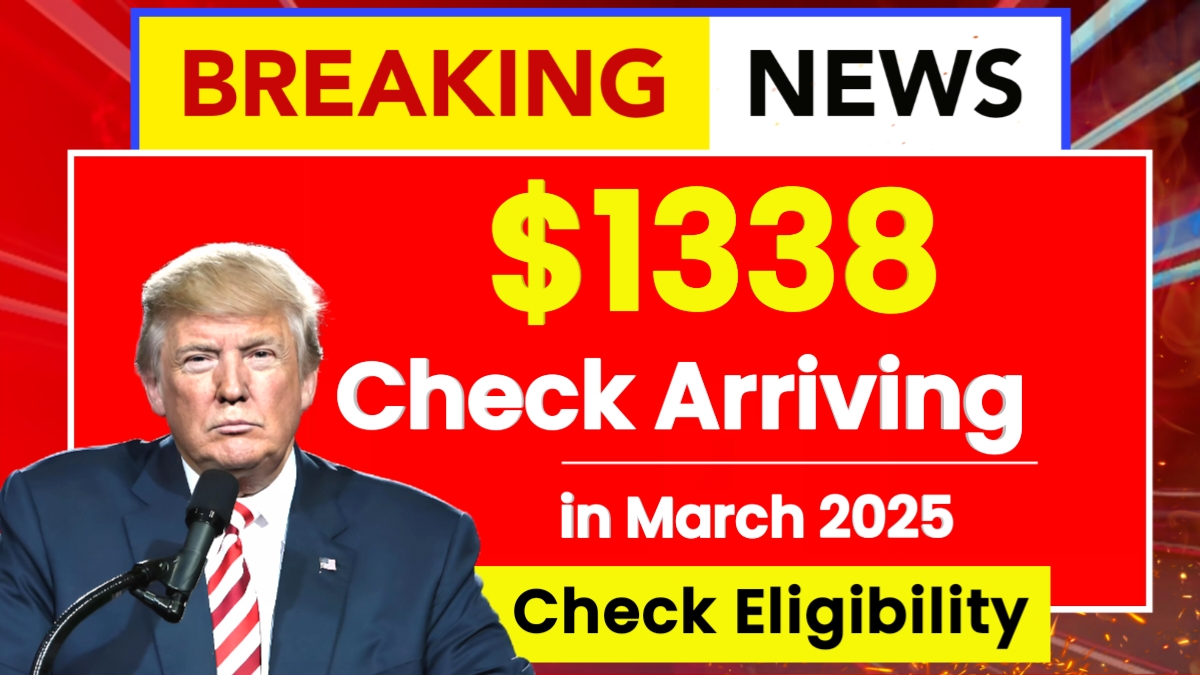Millions of Americans will receive a $1,338 stimulus payment in March 2025 as part of the government’s efforts to support low and middle-income households. This payment aims to help families manage rising living costs, covering expenses such as groceries, utility bills, and daily necessities.
Similar to the stimulus checks issued in 2020 and 2021, this financial relief is designed to support those most affected by economic hardships.
Why Is the Government Issuing Another Stimulus Payment?
The government has introduced this payment in response to ongoing financial struggles, including inflation, economic downturns, and cost-of-living increases.
✔ Primary Goals of the Stimulus Check:
- Provide immediate financial relief to struggling households.
- Encourage consumer spending to boost economic growth.
- Offer targeted assistance to individuals affected by rising expenses.
By injecting billions of dollars into the economy, the government hopes to stabilize financial conditions for millions of Americans.
Who Qualifies for the $1,338 Payment?
Eligibility for the full $1,338 stimulus check is determined by income level, tax filing status, and residency.
✔ Income Limits for Full Payment:
| Filing Status | Full Payment AGI Limit | Partial Payment Phase-Out |
|---|---|---|
| Single Filers | Below $75,000 | Up to $99,000 |
| Married Filing Jointly | Below $150,000 | Up to $198,000 |
| Head of Household | Below $112,500 | Up to $136,500 |
✔ Additional Eligibility Requirements:
- Must have filed a 2023 or 2024 tax return to qualify automatically.
- U.S. citizens or legal residents with a valid Social Security Number.
- Recipients of Social Security (SS), SSDI, SSI, and VA benefits are eligible.
- Families with dependents under 17 may receive additional funds.
📌 Non-filers may still qualify and need to update their information on the IRS website.
How to Claim Your Stimulus Payment
For most eligible Americans, the $1,338 stimulus payment will be automatically processed.
Steps to Ensure You Receive Your Payment:
✔ If You Filed Taxes (2023 or 2024)
- The IRS will process payments automatically based on your latest tax return.
- Ensure your bank details are up-to-date to receive a direct deposit.
✔ If You Haven’t Filed Taxes
- File your 2023 or 2024 tax return ASAP to qualify.
- Some non-filers (Social Security, VA, and SSI recipients) may still qualify automatically.
✔ If Your Banking Information Has Changed
- Update your details through the official IRS website to avoid delays.
📌 Avoid Scams: The IRS will never call, email, or text requesting your personal or financial details.
When Will You Receive Your $1,338 Payment?
The IRS will begin distributing payments in March 2025.
✔ Estimated Payment Timeline:
| Payment Method | Estimated Arrival Time |
|---|---|
| Direct Deposit | 1-2 weeks after processing begins |
| Paper Check | 4-6 weeks (subject to mail delays) |
| Prepaid Debit Card | 4-6 weeks |
📌 If six weeks have passed and you haven’t received your payment, contact the IRS helpline for assistance.
How to Track Your Payment
The IRS “Get My Payment” tool will provide real-time updates on your stimulus check.
✔ Use the IRS “Get My Payment” Tool:
- Check if your payment has been processed.
- Verify whether it was sent via direct deposit or paper check.
- Confirm any delays or issues with your payment.
What to Do If You Don’t Receive Your Payment
If you believe you qualify but haven’t received your stimulus check, take these steps:
✔ Step 1: Check the IRS Payment Status
- Use the “Get My Payment” tool on the IRS website.
✔ Step 2: Be Patient
- Processing a large volume of payments takes time.
✔ Step 3: Contact the IRS
- If your payment is significantly delayed, reach out to the IRS helpline for support.
Other Government Support Programs
Beyond this one-time stimulus payment, several ongoing government assistance programs can help families and individuals struggling with financial challenges:
✔ Earned Income Tax Credit (EITC) – Provides additional tax refunds for low-income workers.
✔ Child Tax Credit (CTC) – Offers financial support to families with children.
✔ Supplemental Nutrition Assistance Program (SNAP) – Helps families afford nutritious food.
✔ Low-Income Home Energy Assistance Program (LIHEAP) – Assists with energy and heating bills.
📌 If you need long-term support, check your eligibility for these programs!
Final Thoughts
The $1,338 stimulus check in March 2025 aims to provide financial relief to millions of Americans. By understanding the eligibility, payment schedule, and application process, you can ensure you receive your payment on time.
🔗 For official updates, visit the IRS website: www.irs.gov
